From pv magazine France
Inaugurated in October 2019 in Piolenc in the Vaucluse department in the southeastern French region of Provence-Alpes-Côte d'Azur, the O'Mega 1 power plant is one of the largest floating photovoltaic installations in Europe and Akuo's first project based on this technology. It has a capacity of 17MW which should be increased to 22MW within a few months thanks to the “O’Mega 1 bis” extension project, currently under construction on the site.
On Jan. 30, 2022, under the effect of a storm coming from the North Sea, a fire broke out on the installation. A little less than a month after the incident, Akuo has revealed the first conclusions of the analysis it carried out internally. pv magazine was able to visit the installation to see the damage and the solutions put in place by the developer.
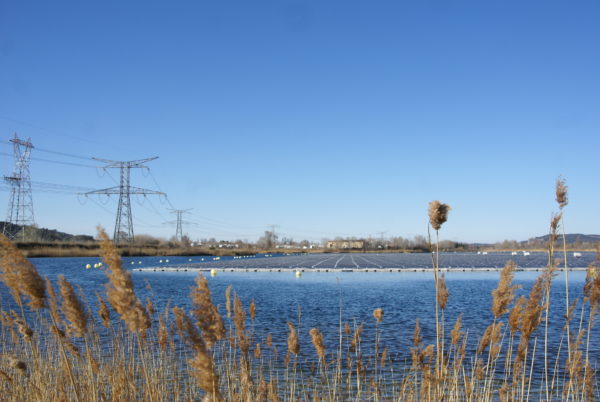
Origin of the incident
At the end of January 2022, the body of water where the installation is located was exposed for several days to violent winds blowing up to 80km/h in gusts. Under the effect of the swell and repeated friction, the cables connecting the modules to the junction boxes became bare, causing a short circuit on one of the three-panel floaters of the power plant. The affected inverters were shut-off but three floats ignited.
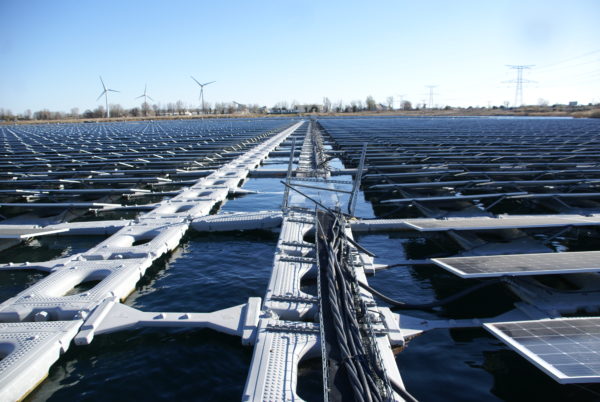
The smoke released by the fire alerted some passers by who called the fire department. Once on site, intervention was not possible for safety reasons related to the conditions of the fire, which came from an electrical source in an aqueous environment. At this point, Akuo manually and completely shut down the plant from the point of delivery. At this time, the three floats on which the cables were placed were already submerged, although retained by the structure. The fire went out. Following the incident, the intact parts of the facility – around 15MW of the 17MW – were returned to service.
Popular content
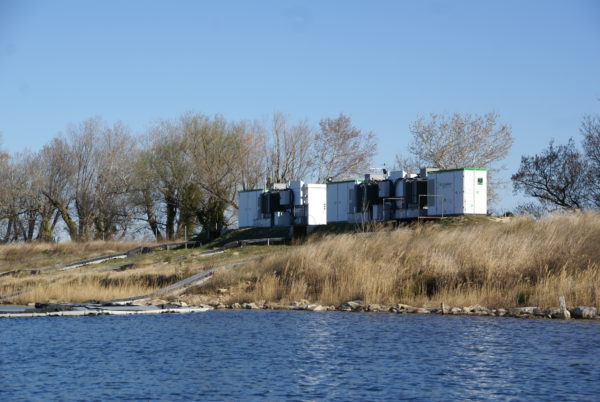
Image: MB
Conclusions
Maintenance teams quickly identified the source of the fire. Indeed, traces of wear on the cables that connect the modules to the transmission terminals had been observed since October 2021. Akuo admitted to having underestimated the effect of wear in the medium term and underestimated the weather risks. In detail, when the site teams became aware of the friction of the cables, the priority was to integrate the adjustments on the new 5MW unit currently under construction.
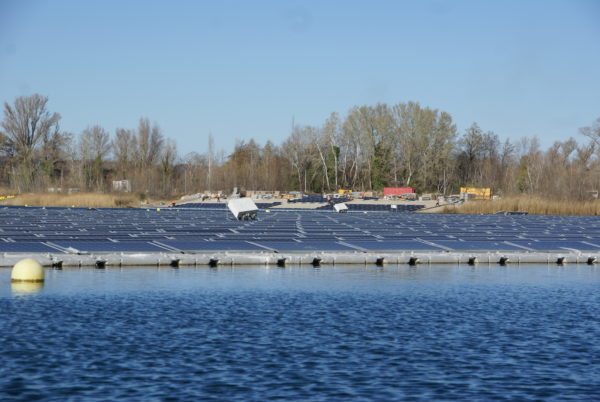
Image: MB
The adjustments in question are quite simple. Sheath security was added to the cables to protect the metal structure on which they rest. “The problem has more to do with supplying and resizing all the cables than with changing the technology,” explained Raphaël Chevrier, director of solar asset management at Akuo and director of the O'Mega 1 site. To that was added the extent of the work to be carried out, since the operation involves removing all the cables from the site and, as a result, that solution was not considered immediately. Because of that, the wear continued, more heavily than had been estimated and, during the high winds at the end of January, the rupture took place.
Stable weather will also be necessary to allow these operations to be finalized as soon as possible. Said works should begin almost in line with the commissioning of the O'Mega 1 bis extension, by the end of the first half of 2022. In the meantime, the damaged fraction of the plant should quickly be put back into service. “We are doing everything we can to repair with the current conditions which are unfavorable to us, whether in terms of the weather or electricity supply problems at the moment,” Chevrier stated.
The floating Hydrelio technology, initially supplied by Ciel et Terre and under license from Akuo since 2016, is not in question. On the contrary. Rather, it is about adapting maintenance needs and becoming familiar with large scale floating PV to more effectively deploy this model in the future. Asked about the operating costs of a floating installation, Raphaël Chevrier estimates that they are “roughly equivalent to a rooftop installation”.
This content is protected by copyright and may not be reused. If you want to cooperate with us and would like to reuse some of our content, please contact: editors@pv-magazine.com.
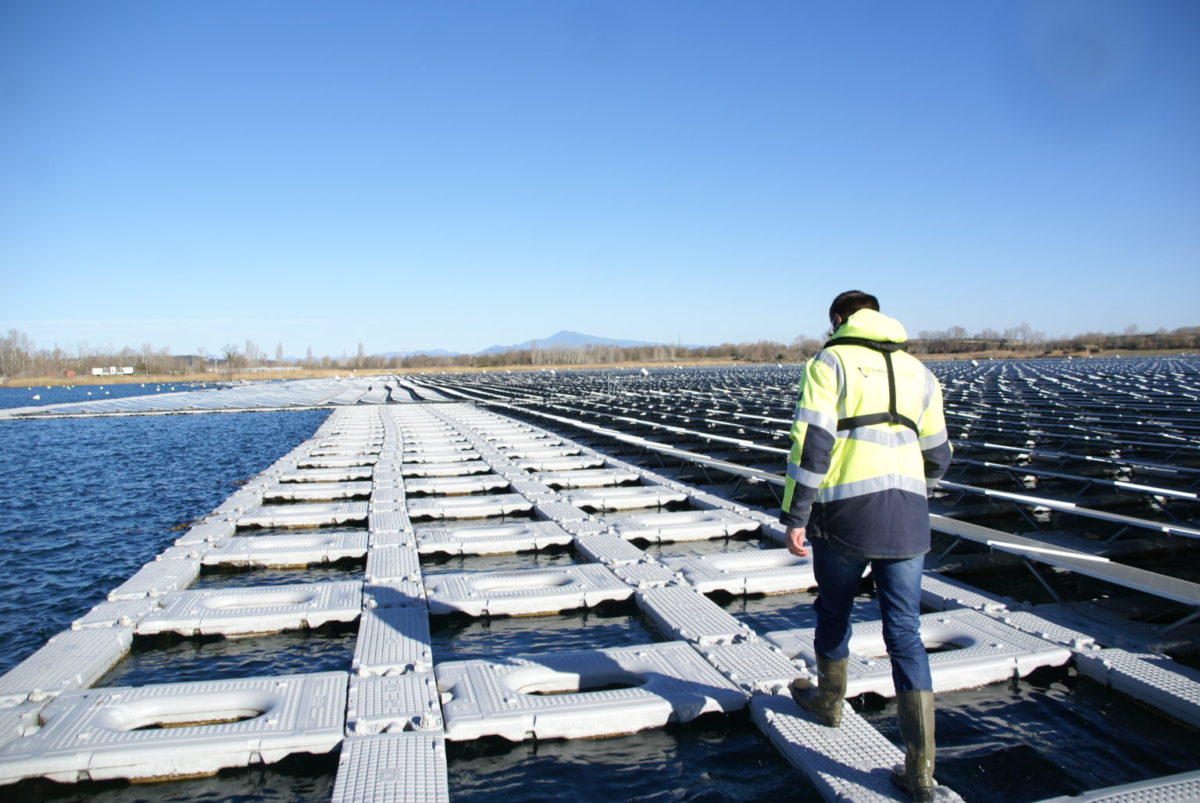


2 comments
By submitting this form you agree to pv magazine using your data for the purposes of publishing your comment.
Your personal data will only be disclosed or otherwise transmitted to third parties for the purposes of spam filtering or if this is necessary for technical maintenance of the website. Any other transfer to third parties will not take place unless this is justified on the basis of applicable data protection regulations or if pv magazine is legally obliged to do so.
You may revoke this consent at any time with effect for the future, in which case your personal data will be deleted immediately. Otherwise, your data will be deleted if pv magazine has processed your request or the purpose of data storage is fulfilled.
Further information on data privacy can be found in our Data Protection Policy.